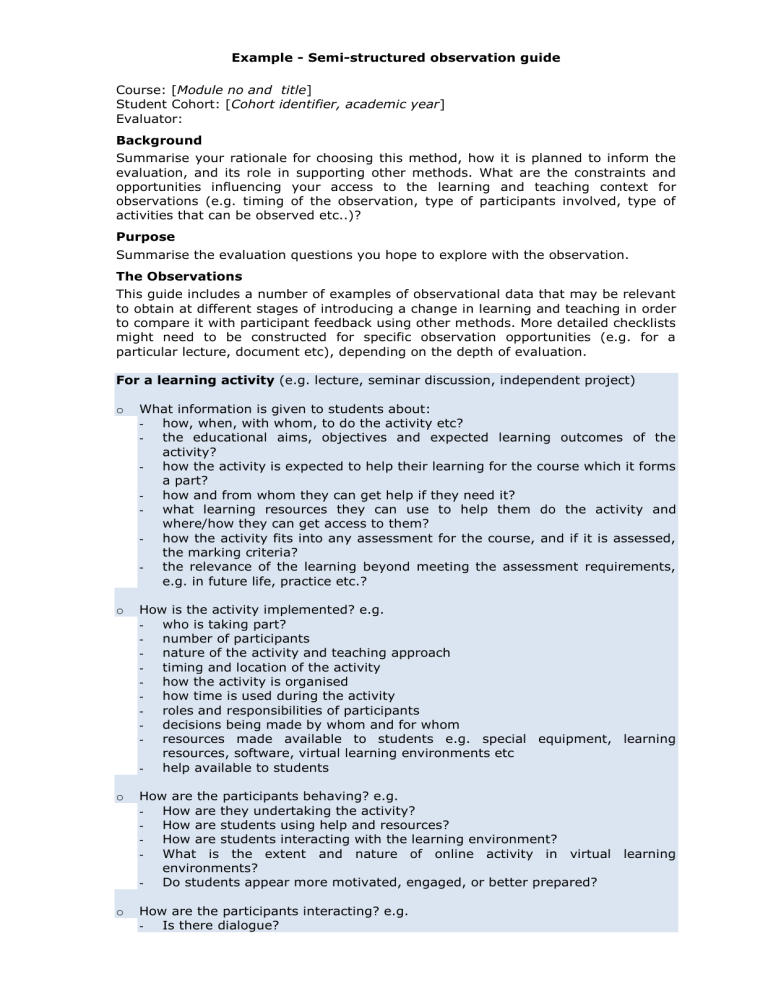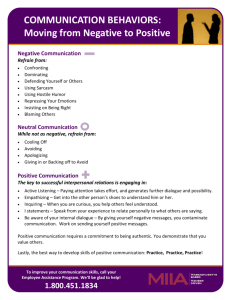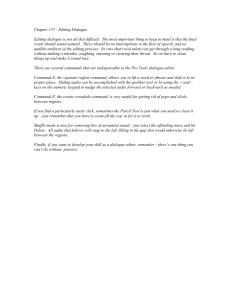Semi-Structured Observation Guide for Learning Evaluation

Example - Semi-structured observation guide
Course: [Module no and title]
Student Cohort: [Cohort identifier, academic year]
Evaluator:
Background
Summarise your rationale for choosing this method, how it is planned to inform the evaluation, and its role in supporting other methods. What are the constraints and opportunities influencing your access to the learning and teaching context for observations (e.g. timing of the observation, type of participants involved, type of activities that can be observed etc..)?
Purpose
Summarise the evaluation questions you hope to explore with the observation.
The Observations
This guide includes a number of examples of observational data that may be relevant to obtain at different stages of introducing a change in learning and teaching in order to compare it with participant feedback using other methods. More detailed checklists might need to be constructed for specific observation opportunities (e.g. for a particular lecture, document etc), depending on the depth of evaluation.
For a learning activity (e.g. lecture, seminar discussion, independent project) o What information is given to students about:
how, when, with whom, to do the activity etc? the educational aims, objectives and expected learning outcomes of the
activity?
how the activity is expected to help their learning for the course which it forms
a part? how and from whom they can get help if they need it?
what learning resources they can use to help them do the activity and where/how they can get access to them?
how the activity fits into any assessment for the course, and if it is assessed, the marking criteria?
the relevance of the learning beyond meeting the assessment requirements, e.g. in future life, practice etc.? o How is the activity implemented? e.g.
who is taking part?
number of participants
nature of the activity and teaching approach
timing and location of the activity
how the activity is organised
how time is used during the activity
roles and responsibilities of participants
decisions being made by whom and for whom resources made available to students e.g. special equipment, learning
resources, software, virtual learning environments etc
help available to students o How are the participants behaving? e.g.
-
How are they undertaking the activity?
-
How are students using help and resources?
-
How are students interacting with the learning environment?
-
What is the extent and nature of online activity in virtual learning environments?
-
Do students appear more motivated, engaged, or better prepared? o How are the participants interacting? e.g.
-
Is there dialogue?
-
Is the dialogue constructive for learning?
-
Who is talking/listening?
What is their body language/non-verbal information?
-
-
Is there evidence in the dialogue that students are learning?
-
How are students learning from the dialogue? (e.g. staff-student, peer-peer discussion, group inquiry….etc)
Is there evidence in the dialogue that academic staff/support staff are
responding to students’ learning needs?
-
How is feedback being given to students? o What is the evidence that students have achieved expected learning outcomes, e.g.
from their completion of activities, assessment?
from their behaviour and dialogue?
from their level of achievement? from their ability to engage with subsequent courses?
-
from their ability to secure employment?
For a learning resource o How does the resource compare to the original design? o Does it appear to be of good quality (visual, sound, contents, structure of contents)? o How are students introduced to the resource (verbal information, written information, demonstration, training etc)? o What information is given to students about
how it will help their learning? how to access and use it?
-
how and where to get help if needed?
How are students using it? [This may not be possible to observe directly, depending on nature of the resource.]
-
What do they seem to find helpful?
-
What do they have difficulty with?
-
How are they using it to interact with other participants (staff and students)?
For an institutionally funded project
How has the project been implemented? e.g.
-
Who is involved?
-
What project management approach has been adopted?
-
What are the roles and responsibilities and how were these were decided?
-
What are the timescales and milestones?
-
What resources are available (e.g. time, money, technology, personnel with appropriate skills/expertise etc)?
-
What documentation has been produced? How is this being used?
-
How is time managed?
-
How are decisions being made?
How are the project team behaving?
-
How are they undertaking their own responsibilities?
-
How are they collaborating with other team members?
How are they participating in decision making?
-
How are the project team interacting?
-
What is being discussed? How often?
-
Is dialogue constructive and collaborative?
-
Who is talking/listening?
-
What is the group dynamic?











